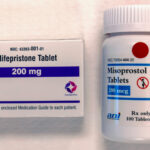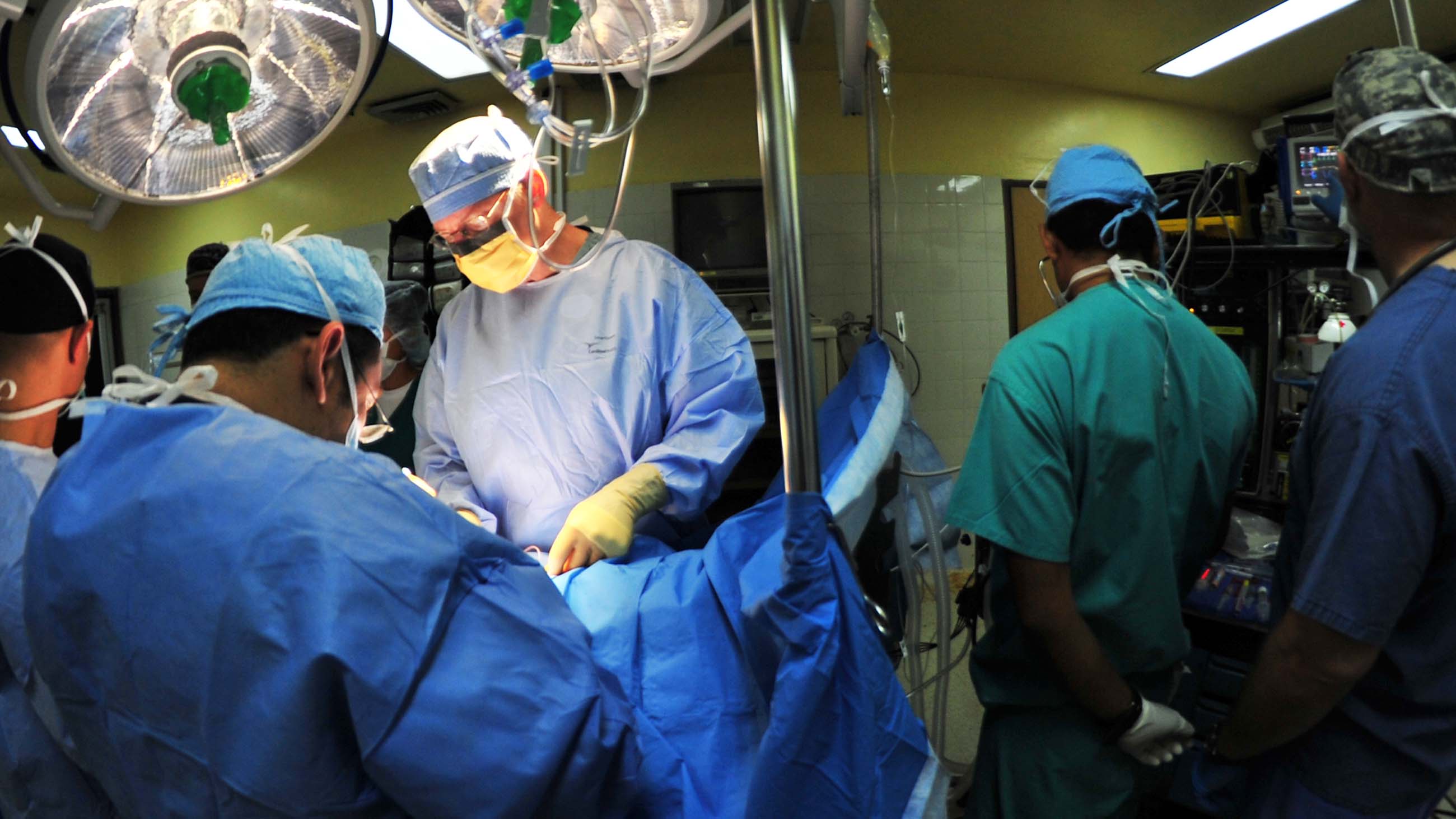How Doctors’ Biases Compromise Care
When someone is sick or needs the help of a physician, who should decide what is appropriate — what blood tests and imaging studies to order, what medicines to prescribe, what surgeries to perform? Should it be the doctor, the patient, or some combination of the two? Most people nowadays (even most physicians) support what is called “shared decision-making”, in which the doctor and patient (and often her family or friends) discuss the situation and come up with a joint plan. The doctor’s role is that of experienced guide, whose medical knowledge, skill, and expertise help to shape the conversation and whose understanding of the priorities, values, and goals of the patients steers the plan in a given direction to the satisfaction of all.

Unfortunately, in the real world, things don’t always work this way. Doctors and patients have a number of masters, both welcomed and uninvited. Insurance companies or other third-party payers often intrude into the decision-making process, limiting the choices of what services and products might be available: a sick patient often must wait for pre-authorization for expensive diagnostic tests and procedures; pharmacy formularies restrict the kinds of drugs available for prescriptions, and so on. Furthermore, some doctors have personal interests in the interventions they recommend. Many surgeons make more money if they do more surgery, cardiologists earn more if they put in more cardiac stents and pacemakers, and drug companies have better profits if they sell drugs for chronic conditions that never get better and require lifelong medication (such as high cholesterol, hypertension, and diabetes). Such practices contribute to the seeming inexorable rise in health care costs (and a host of adverse outcomes) in the United States.
Yet controlling cost without sacrificing quality has been a daunting task. One strategy might be to pay more attention to what patients need, and less to what they want, assuming that the two don’t overlap. Another is limiting the excess of doctors who prescribe because of conflicts of interest or acts of “defensive medicine” — in other words, to protect themselves from lawsuits, not aid the patient.
How does one go about rationing care? Will faceless bureaucrats be denying granny her medication or access to an intensive-care unit solely because she’s old, or saying that Billy can’t get his conditions treated because he is disabled? Indeed, dread of rationing — as well as a healthy dose of old-fashioned fear-mongering by crafty politicians — is what inspired the meme of “death panels,” an unfounded canard based upon a misinterpretation of a proposed federal rule for Medicare. Nevertheless, the concept of rationing is still of concern because it implies restriction of a resource that could be beneficial.
Therefore, rationing doesn’t apply to interventions that can’t help anyone at any time — for instance, antibacterial antibiotics that won’t work because the patient has a viral infection. A better example of true rationing is the allocation of organs — such as livers, hearts and lungs — for transplantation. Organ transplantation requires rationing because the supply never keeps up with demand. We also ration drugs that can suddenly become scarce (a distressingly common problem).
But there are other forms of rationing that are problematic, too. The most common one, intrinsic to the U.S. health care system, involves limiting the kind and amount of health care one can obtain based on one’s financial situation. Poorer people get less and worse health care than wealthy people. While the most offensive aspects of this arrangement have been mitigated to some extent in those states that expanded Medicaid under the auspices of the Affordable Care Act, there are still alarming numbers of Americans who have limited access to effective medical care. This is one of the chief reasons why the U.S. population as a whole doesn’t get as much bang per buck as citizens of many other nations, and this form of rationing is blatantly unfair.
But there is another form of rationing that is more insidious still. This is the so-called bedside rationing, in which doctors decide, on an individual per-patient basis, what should be available to them, regardless of the range of services that their insurance or finances might otherwise allow. The problem with this is that it is readily susceptible to prejudice and discrimination, both overt and hidden. It is well-known that doctors, like pretty much everyone else, harbor so-called implicit biases that are readily revealed on the implicit-association test (available online).
This does not mean that physicians express overt sexism, racism, or others forms of bigotry — but rather that these unconscious beliefs about others can influence the kinds of treatments that they offer. Thus, bedside rationing can violate one of the cardinal principles of fairness — that clinically similar situations be treated similarly. So doctors could offer one patient (say, a well-off white person) with unstable angina and blocked coronary arteries the standard of care with cardiac catheterization and stents, while offering just medical therapy to an African-American patient with comparable disease. And there is ample evidence that such differential treatment occurs.
So how does one “choose wisely” and escape the moral pitfalls of bedside rationing? It turns out that this is an extraordinarily difficult to do, especially in a system such as ours where physicians have such discretionary power about what diagnostic and treatment interventions should be on the ‘menu’ for each patient. This can readily lead to too much and too little offered to patients for reasons that cannot be easily justified.
I think that the solution, at least in the U.S., might require a wholesale re-engineering of our health care system to minimize the financial incentives to overprescribe, and to protect or immunize against the biases that lead to inappropriate rationing at the bedside. The only way to reduce the frequency of these behaviors is to have a single-payer system that controls (to a certain extent) the availability of certain interventions, analogous to the way in which the organ-transplant system regulates who gets transplanted and under what circumstances.
Of course, unlike livers and hearts, what needs to be rationed in the U.S. is money and what it can buy. We could save money by efficiencies of scale and decreasing the waste and administrative costs that contribute at least 25 percent of the total cost of what we now spend. Can we totally eliminate “bad” rationing? No, of course not. But Americans should do all they can to avoid the moral tragedy of being the wealthiest nation on Earth that chooses dumbly, not wisely, about health care. ![]()
Philip Rosoff is professor of pediatrics and director of the clinical ethics program at Duke University Hospital in North Carolina. He is the author of “Drawing the Line: Healthcare Rationing and the Cutoff Problem” (2017).
This article was originally published at Aeon and has been republished under Creative Commons.











Comments are automatically closed one year after article publication. Archived comments are below.
It’s hard to say
I agree with you
U of Washington, hmmmm…. there is a reason we are being injured by our doctors, CDC made human population testing exempt from lab requirements, if you are of middle-class and down it will not matter where you came from, you are the “experiment” this is why hospitals rushed to get electronically set up, it is why you won’t find one singleattorney to protect your patients rights. The amount of life changinging mistakes by doctors is way larger than you all know, I saw files upon files,of those mistakes one or two ever get compensation for the horrible mistakes being made onto patients. If you think it’s going to get better, think again,it’s way worse. Don’t you find it odd that you can get a loan for any plastic surgery procedure you want,but a necessary surgery just can’t seem to be done? Fight back before more of us are dead from utter egotistical bullying because we are liked or of the wrong class. They are doctors for christ sakes, you are suppose to value life not ruin it on intent!
How about second opinion review by a diverse peer group. The internet can provide a medium where records and diagnosis are reviewed. Can even be racially and economically blind.
Before transitioning I received far better health Care while also having a wide range of doctors who are able and willing to treat me. Now I’m limited to a small number of medical providers in major liberal cities. Finding a doctor or therapist used to mean looking up docs on my insurance website and booking an appointment. Now I have to rely more on word of mouth and s vetting process.
A few years ago I was sent to the emergency room to get an abces drained. They refused to do so. I ended up in the ER 4x before I was admitted because by then it went systemic and the fever was making me hallucinate. While I was in the hospital I was repeatedly misgendered. Since it was a rural hospital Doctors not involved with my care would filter through my room and ask invasive questions about my genitals past, present and possible future configurations. On more than one occasion I’ve also noticed that staff not involved with my care reading over the shoulders of people looking at my medical records.
Doctors who manage hormones for cis patients all of a sudden become not qualified to manage mine.
Therapists only want to focus on my transness even though my main complaint had nothing to do with it. I went through 6 therapists in 1 year until I realized that only therapists who are queer can provide adequate service which means that I can’t live in more rural areas if I want to seek relief.
Insurance companies regularly deny services that they provide to cis patients. They also require that you prove that you aren’t crazy by two separate therapists or phycologists with advanced degrees before they will pay up.
I respectfully disagree. Regardless of one’s educational pedigree, this is an opinion. Since my medical education in the 80s, based upon a Surgical education, no “shotgun” testing was permitted. That was ONLY due to the first Chairwoman of Surgery, Olga Jonasson, MD. Many others didn’t have my training in Surgery, or medicine. The author’s opinion describes a possible race, sex or socio economic biased demographic.
Thus, the article has no reflection on anything I have come across since my MD in 1988.
There is indeed a difference in the way Doctors treat black versus white patients, but it has more to do with the willingness of black patients to comply with a Doctors directions than racism. Blacks make horrible patients and thus Doctors are often compelled to settle for a less than satisfactory course of treatment.
This is some racist BS right here. ^^
It seems to me one answer to the problem is the one you suggest, single payer universal access to baseline medical care at an affordable price.
But that system has known faults that lead to rationing also; expensive experimental treatments are frequently unavailable to patients, leading to stagnation of the health sciences. A blended system that allows a patient to purchase additional coverage over and above baseline care might address that problem, while providing basic, affordable medical care for everyone?
It is well-known that doctors, like pretty much everyone else, harbor so-called implicit biases that are readily revealed on the implicit-association test (available online).
This does not mean that physicians express overt sexism, racism, or others forms of bigotry — but rather that these unconscious beliefs about others can influence the kinds of treatments that they offer.
—
This is a great thought. We should create a new system which eliminates individual doctor’s decision making ability because they are unknowingly racist.
Pilots (especially military pilots) and nuclear power plant operators also have biases, but their training supersedes them with better attitudes. Their safety record speaks volumes about the effectiveness of their training systems. These training systems are built on task analysis, are curriculum-driven to address all threatening scenarios, require demonstrated proficiency on a recurring basis, and are conducted by certified instructors on certified training devices.
Doctors get trained today the same risk-filled, error-prone way they were in the 1800s: personality-driven; conducted by anybody with an MD after their name; limited to whatever kinds of patients walk through the door during residency.
The malpractice insurance industry does not manage the risk from antiquated, random training of doctors; that risk is borne by the hapless patients.
The medical,profession unfortunately has become not only unethical but very commercial . Being a doctor I feel very sad